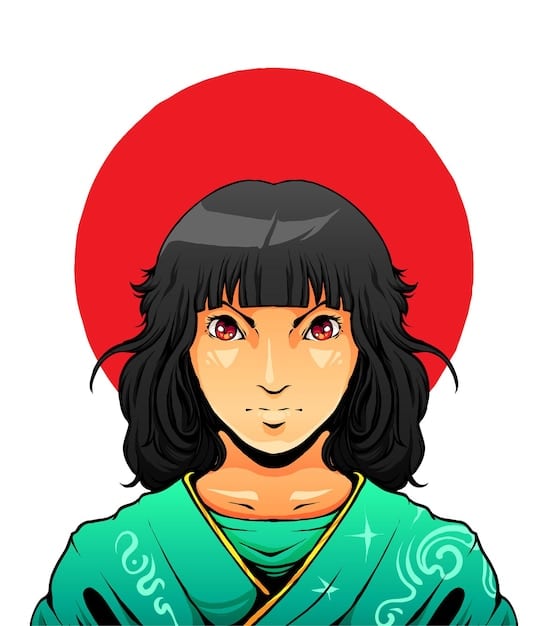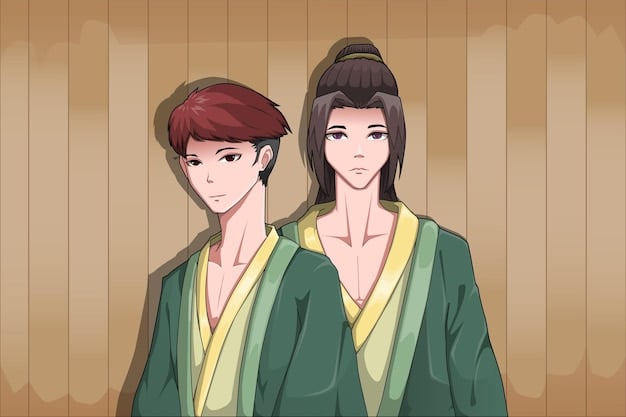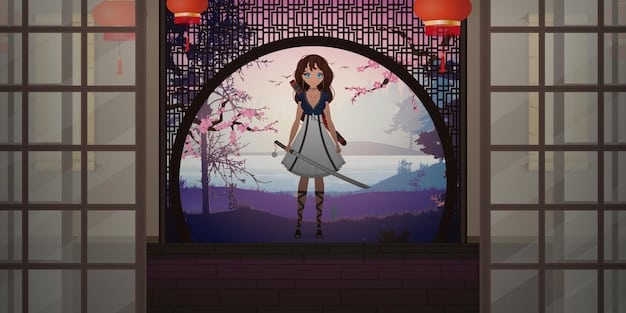Decoding Josei Manga: The Art of Subtlety in Emotional Storytelling

The Art of Subtlety: Decoding Emotional Nuances in Josei Manga Storytelling explores the sophisticated ways in which josei manga conveys complex and realistic emotions, diverging from more overt shojo expressions. It analyzes narrative techniques, character development, and nuanced themes that resonate with mature audiences.
Dive into the intricate world of josei manga, where emotions aren’t always on full display. The Art of Subtlety: Decoding Emotional Nuances in Josei Manga Storytelling reveals the sophisticated techniques used to portray complex feelings in a way that resonates with mature readers.
Understanding Josei Manga: A Genre for Mature Audiences
Josei manga, aimed at older female audiences, distinguishes itself from other genres through its mature themes and realistic portrayals of relationships and emotions. It often deals with the complexities of adult life, including career struggles, romantic entanglements, and societal pressures.
The Defining Characteristics of Josei Manga
Josei manga stands apart due to its narrative depth and character-driven stories, emphasizing nuanced emotional development and relatable scenarios. Here are some key elements that define the genre:
- Realistic portrayals of adult relationships: Josei manga focuses on the complexities and challenges of mature relationships, moving beyond idealized romance.
- Exploration of career and social issues: These manga often tackle real-world problems, such as workplace dynamics, gender inequality, and personal identity.
- Character-driven narratives: The stories prioritize character development and emotional growth, allowing readers to connect deeply with the protagonists.
Unlike shojo manga, which often features idealized romance and youthful protagonists, josei manga provides a more grounded and relatable perspective on life and love. It acknowledges the messiness and ambiguity of human emotions, creating a richer and more engaging reading experience.

Josei manga offers a refreshing take on storytelling, providing a space for mature readers to explore complex themes and emotions in a nuanced and thought-provoking way. Its emphasis on realism and character development sets it apart as a unique and compelling genre.
The Power of Subtext: Conveying Emotions Without Overt Expression
Subtext is a cornerstone of josei manga storytelling. Rather than explicitly stating a character’s emotions, josei manga often relies on subtle cues and indirect communication to convey inner feelings. This approach allows for a more layered and sophisticated exploration of emotions.
Techniques for Using Subtext in Josei Manga
Writers and artists employ various techniques to create subtext in josei manga, enriching the narrative and engaging the reader on a deeper level. Here are a few examples:
- Facial expressions and body language: A slight furrow of the brow or a turn of the head can speak volumes about a character’s inner state.
- Symbolism and metaphor: Recurring motifs or visual metaphors can represent deeper emotional themes and character arcs.
- Dialogue and word choice: What is not said is often as important as what is said. Nuanced dialogue and careful word choice can reveal hidden emotions and motivations.
Subtext allows josei manga to delve into the complexities of human relationships and emotions in a way that is both realistic and thought-provoking. By relying on subtle cues and indirect communication, these manga create a more engaging and rewarding reading experience for mature audiences.
By mastering the art of subtext, josei manga can create narratives that resonate deeply with readers, inviting them to actively participate in the emotional journey of the characters. This approach fosters a sense of intimacy and connection between the reader and the story.
Decoding Non-Verbal Cues: Body Language and Facial Expressions
In josei manga, non-verbal cues play a vital role in conveying emotions. Body language and facial expressions often reveal more about a character’s true feelings than their words. Artists carefully craft these visual details to create a rich and nuanced portrayal of emotional states.
Key Aspects of Non-Verbal Communication in Manga
The effective use of non-verbal cues requires a keen understanding of human psychology and the ability to translate these nuances into visual representations. Key aspects include:
- Eye movements: Averting gaze, widening eyes, or a lingering stare can all communicate different emotions and intentions.
- Posture: Hunched shoulders, a stiff back, or relaxed posture can indicate feelings of stress, confidence, or vulnerability.
- Hand gestures: Clenched fists, trembling hands, or gentle touches can reveal underlying emotions and relationship dynamics.
By paying close attention to these non-verbal cues, readers can gain a deeper understanding of the characters and their emotional journeys. These subtle details add depth and complexity to the narrative, making the story more engaging and relatable.

The combination of visual storytelling and nuanced character development creates a powerful and immersive reading experience. Josei manga excels at using non-verbal cues to convey emotions, making it a genre that rewards careful observation and attention to detail.
The Significance of Silence: Unspoken Emotions in Dialogue
Silence, in the context of josei manga, isn’t merely an absence of speech; it’s a powerful tool for conveying unspoken emotions and deepening the narrative. The strategic use of silence can create tension, build suspense, and reveal hidden depths in character relationships.
How Silence Enhances Storytelling
Silence invites the reader to actively participate in the storytelling process, filling in the gaps and interpreting the unspoken emotions of the characters. Here’s how it works:
Empty panels and pauses in dialogue: These moments of silence allow the reader to reflect on the characters’ inner states and the underlying tensions in the scene.
Unspoken feelings between characters: Silence can communicate a range of emotions, from unspoken love and longing to unresolved conflict and resentment.
Emphasis on atmosphere and mood: Silence can enhance the overall atmosphere of the scene, creating a sense of unease, anticipation, or intimacy.
By mastering the use of silence, josei manga can create narratives that are both emotionally resonant and intellectually stimulating. Silence becomes a powerful language in itself, allowing the story to speak volumes without uttering a single word.
The artful use of silence allows josei manga to explore the complexities of human emotions in a way that is both subtle and profound, drawing the reader into the inner world of the characters and their relationships.
Symbolism and Metaphor: Imbuing Objects and Scenes with Emotional Weight
Symbolism and metaphor are integral to josei manga storytelling, adding layers of meaning and emotional resonance to the narrative. Objects, settings, and even character designs can be imbued with symbolic significance, representing deeper themes and emotional states.
Examples of Symbolism in Josei Manga
Here are some common examples of how symbolism and metaphor are used to enhance the emotional depth of josei manga:
- Weather: Rain, sunlight, and wind can symbolize different emotional states, such as sadness, hope, or turmoil.
- Objects: A broken mirror might represent a fractured sense of self, while a blooming flower could symbolize new beginnings.
- Colors: Certain colors can be associated with specific emotions, such as red for passion or blue for melancholy.
By incorporating these symbolic elements, josei manga creates a richer and more complex reading experience. Readers are invited to interpret the deeper meanings behind the surface narrative, engaging with the story on multiple levels.
By carefully crafting the symbolic elements within their stories, josei manga artists can create narratives that are both visually stunning and emotionally profound. This approach allows for a deeper exploration of complex themes and emotions, making the genre a favorite among mature readers.
The Impact of Cultural Context: Understanding Emotional Expression in Japan
Understanding the cultural context is essential to fully appreciate the art of subtlety in josei manga. Japanese culture often emphasizes indirect communication and emotional restraint, which is reflected in the way emotions are portrayed in manga.
Key Cultural Concepts Influencing Emotional Expression in Manga
Several cultural concepts influence how emotions are expressed in Japanese society and, consequently, in josei manga. These include:
- Honne and Tatemae: The distinction between one’s true feelings (honne) and the face one presents to the public (tatemae) can create tension and subtext in character interactions.
- Enryo: The act of restraint and consideration for others can lead to characters suppressing their own desires and emotions.
- Wabi-sabi: The appreciation of imperfection and impermanence can inform the portrayal of flawed characters and imperfect relationships.
By understanding these cultural nuances, readers can gain a deeper appreciation for the subtle ways in which emotions are conveyed in josei manga. These cultural elements add layers of complexity and depth to the narrative, making it a truly unique and rewarding reading experience.
The cultural context of Japan significantly shapes the way emotions are portrayed in josei manga, contributing to its unique and sophisticated storytelling style. By embracing these cultural nuances, josei manga offers a glimpse into the complexities of human relationships and emotions within a specific cultural framework.
| Key Point | Brief Description |
|---|---|
| 🎭 Emotional Subtlety | Conveying emotions through nuanced expressions and subtext. |
| 🗣️ Non-Verbal Cues | Using body language to reveal character’s true feelings. |
| 🤫 The Power of Silence | Enhancing storytelling through unspoken emotions. |
| 🎨 Symbolism | Adding depth with symbolic objects and metaphors. |
Frequently Asked Questions
▼
Josei manga targets older female audiences, focusing on realistic relationships and mature themes. It often explores workplace dynamics, societal issues, and complex emotions, setting it apart from shojo manga’s idealized romance.
▼
Josei manga presents emotions with subtlety and nuance, unlike shojo manga’s often overt expressions. It emphasizes realistic reactions and unspoken feelings, mirroring the complexities of adult emotional experiences.
▼
Understanding cultural concepts such as honne and tatemae provides context for the characters’ actions and motivations. This knowledge allows readers to grasp the implicit meanings and subtle emotional cues within the stories.
▼
Recurring weather motifs, specific objects, and particular color themes often hold symbolic value. For example, rain may signify sadness, while blooming flowers can represent fresh starts or blossoming love.
▼
Strategically used silence invites readers to interpret unspoken emotions and underlying tensions. Empty panels or pauses in dialogue allow for reflection, deepening the emotional impact of the narrative through implicit understanding.
Conclusion
In conclusion, the beauty of josei manga lies in its subtle and nuanced exploration of human emotions. By understanding the techniques employed by artists and writers, such as the use of subtext, non-verbal cues, and cultural context, readers can fully appreciate the depth and complexity of this genre.





